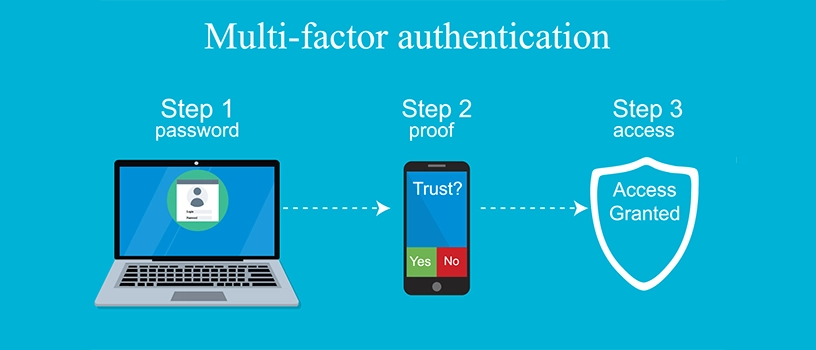
Introduction
In today’s digital age, more and more data is moving to the cloud. From personal photos and contacts to critical business documents, the convenience of accessing information from anywhere is undeniable. However, this convenience also brings challenges, especially when it comes to keeping our data safe. This guide aims to help you understand how to secure your data in the cloud.
Understanding Cloud Security
Before we dive into the steps to secure your cloud data, it’s important to grasp the basics of cloud security. This foundation will help you understand why each step is important and how they work together to protect your data.
What is Cloud Security?
Cloud security involves measures and technologies that protect cloud-stored data from theft, leakage, and deletion. Methods include encryption, access control, and secure software interfaces.
Why is It Important?
With data breaches becoming more common, cloud data security is crucial. It not only protects sensitive information but also ensures compliance with data protection laws.
Key Steps to Secure Your Data
Now that we have a basic understanding of cloud security let’s look at the practical steps you can take to secure your data. These actions are straightforward but critical in building a robust defense for your cloud-stored information:
Use Strong Passwords and Authentication Methods
Start with the basics. Use complex passwords and consider multi-factor authentication (MFA) for an extra layer of security. MFA requires a second form of identification beyond just the password, like a code sent to your phone.

Understand Your Cloud Service Provider’s Security Measures
Know what security features your cloud provider offers. Look for data encryption, regular security audits, and whether they comply with standards like GDPR or HIPAA. This knowledge helps you align your security measures with theirs.
Encrypt Your Data
Encrypting data before uploading it to the cloud adds a crucial layer of security. Even if data is intercepted, encryption ensures it remains unreadable. Use strong encryption standards like AES-256.
Regularly Backup Your Data
Backups are essential. They ensure that you have access to your data if it’s lost or compromised. Automate backups to occur regularly and test them to ensure they can be restored.
Monitor and Manage Access
Be strict about who has access to your data. Use the principle of least privilege, only giving access to those who absolutely need it. Regularly review access permissions and adjust as needed.
Stay Updated on Security Trends
The digital landscape is always changing. Stay informed about new security threats and best practices. Attend webinars, follow relevant blogs, and participate in forums dedicated to cloud security.
Tools and Technologies for Enhanced Security
There are many tools to help keep cloud data safe. Firewalls and antivirus programs guard against attacks from outside. Security management tools can do security checks and help with following rules automatically. Also, systems that detect and stop intrusions watch for any unusual activities.
Moving to Advanced Security
After setting up basic security, it’s time to look at more advanced steps. These extra layers help protect your data even more, fighting off complex threats:
- Implement Network Security Controls: Keep your cloud safe with things like firewalls, VPNs, and intrusion detection systems. Firewalls stop unallowed access, VPNs make data secret when it moves, and intrusion detection looks for odd behavior, making sure data moves safely.
- Data Loss Prevention (DLP) Strategies: DLP tools watch and control where your data goes, making sure no important information leaves without permission. Set up DLP rules to watch over your data from when it’s made until it’s deleted. This helps stop data leaks or theft.
Legal and Compliance Considerations
Keeping data safe is not just about using tech tools. It’s also important to know and follow the law. Making sure you do things right by the law helps keep your data safe in a legal way.
- Understand Legal Implications: It’s important to follow laws like GDPR, HIPAA, or CCPA. These laws say how data should be kept safe. Not following them can lead to big fines and harm your reputation. Make sure your cloud use and how you handle data fit these laws.
- Regular Compliance Audits: Do regular checks to make sure you’re following the law and standards. These checks find weak spots and make sure your data protection plans are current. Many cloud services offer tools to help with these checks and keep records for legal reasons.
Educating Your Team
A big part of keeping data safe is avoiding simple mistakes. Teach your team why keeping data safe is important. Have regular lessons on spotting scams, using the internet safely, and keeping data private. Make a workplace where everyone feels okay to talk about any security worries. This helps stop problems fast and prevents them from escalating.
Conclusion
Securing cloud data might seem daunting, but by taking systematic steps, you can significantly reduce the risks. Remember, security is not a one-time effort but a continuous process. By following the guidelines mentioned above and staying informed about the latest in cloud security, you can protect your valuable data effectively. Whether you’re a software engineer, data engineer, or anyone who uses cloud storage, these practices will help you keep your data safe in the cloud.